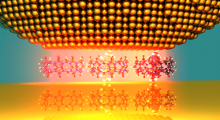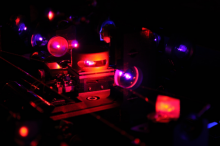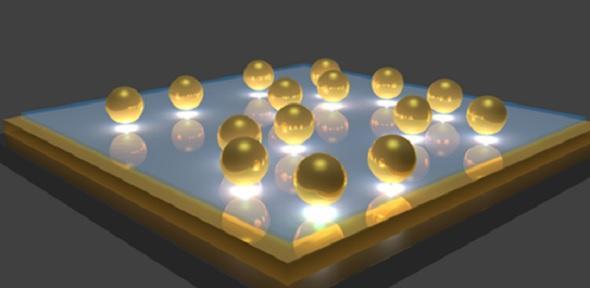| |
 Chemical reactions at the nanoscale Chemical reactions at the nanoscale
Incorporating nanosized reactors allows exact control and selectivity of reactants. Using cucurbituril molecules as both reaction vessels and spacers between gold nanoparticles ensures that the reaction happens exactly in the plasmonic hotspot, allowing for extremely sensitive SERS measurements
Key papers:
Taylor et al., Nano Lett 13, 5985 (2013)
|
| |
 Plasmonic molecular sensing Plasmonic molecular sensing
Using the immense enhancement created by plasmonic structures combined with carefully tailored molecular scaffolding, incredibly sensitive SERS sensors can be formed that allow the observation of diffusion of single molecules through lipid bilayers, and can detect trace amounts of molecules in aqueous environments and body fluids.
Key papers:
Kasera et al., Scientific Reports 4, 6785 (2014)
Taylor et al., Science Reports 4, 5490 (2014)
|
| |
 Tuneable ultrafast SERS Tuneable ultrafast SERS
We developed a new broadband spectrally tuneable system for spectrally-resolved SERS. By scanning the excitation wavelength across the whole visible spectrum, we can investigate the near- and far-field optical response of individual plasmonic nanostructures in detail. This study provides new insights into the physical properties of tightly confined nano-gaps. The system can also be exploited for frequency-optimized Raman and SERS measurements on a large variety of samples.
Key papers:
Lombardi et al., ACS Photonics 3, 471 (2016)
Steuwe et al., Nano Lett 11, 5339 (2011)
|

 Self-assembled plasmonic nanogaps
Self-assembled plasmonic nanogaps 




